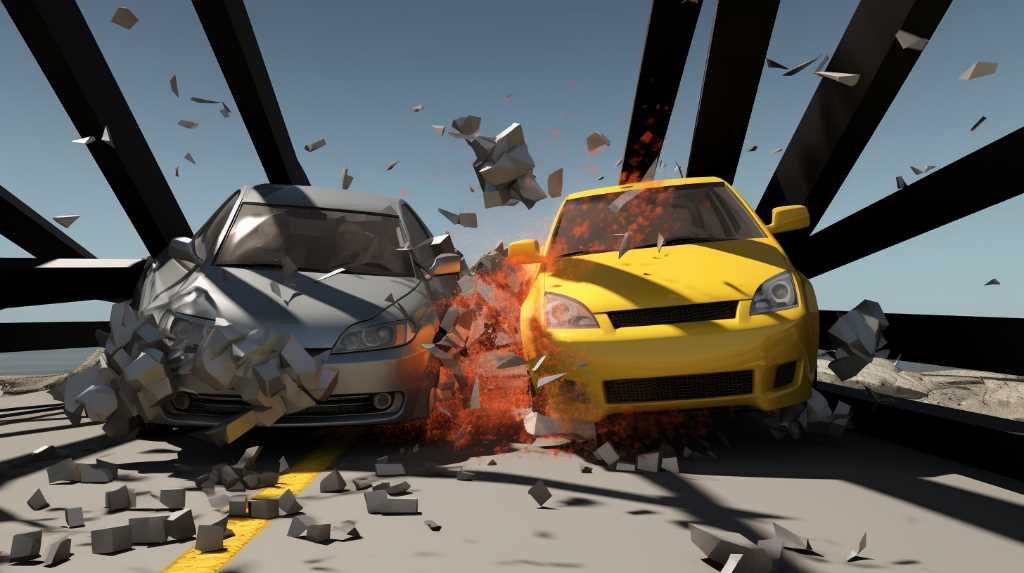
Understanding Newton’s Law of Inertia in Car Crashes
Newton’s First Law of Motion, also known as the law of inertia, tells us that an object will stay still or keep moving at the same speed unless something else makes it change. This idea is very important for understanding car crashes.
When a car suddenly stops or turns, inertia causes the car and the people inside to keep moving. This can lead to the passengers hitting the inside of the car hard, or even being thrown out of the car if they’re not wearing seatbelts.
Knowing about inertia helps us make cars and seatbelts better, which can protect people more during crashes and lessen the chance of getting hurt.
Understanding Inertia’s Fundamentals
In simple terms, inertia is a concept that means things don’t like to change what they’re doing. If something is sitting still, it wants to stay still. If it’s moving, it wants to keep moving in the same way, unless something else forces it to change.
Sir Isaac Newton was the first to describe this idea, and it’s really important for predicting how things move. For example, when you’re driving a car, the car’s mass makes it want to keep going the way it is, which is why you need more force to speed up, slow down, or turn. The heavier the car, the more force you need to change its movement.
That’s why big trucks take longer to stop than small cars. This idea helps us understand and predict how vehicles will behave on the road.
Inertia’s Impact on Passengers
People often don’t realize how much inertia can affect passengers in a car crash. Inertia is the reason things keep doing what they’re doing, like moving or staying still, unless something else makes them change. This can be dangerous for passengers when a car suddenly speeds up or slows down.
For example, in a crash, passengers might keep moving forward even when the car stops, which can cause them to hit the seatbelts or car interior hard, sometimes leading to serious injuries or even death.
Understanding how this works is really important for making car safety features like seatbelts and airbags better, so they can protect people by reducing the effects of inertia.
Vehicle Design and Inertia
When engineers design cars, they pay a lot of attention to inertia, which is how objects move and stop. This is important because understanding inertia helps make cars safer and protects people better if there’s a crash. They make sure the car’s weight is spread out evenly and the car is strong enough to handle the force of a crash.
For example, parts of the car like the crumple zones are made to bend in a specific way to soak up the energy from the crash, which helps slow down the car more gently and keeps the people inside from getting hurt as badly.
They also put heavy parts, like the engine, in places that make the car less likely to tip over. This keeps the car stable on the road. Safety features like seatbelts and airbags are set up to work against inertia. They hold you back at just the right time to keep you safe.
Each part of the car’s design is carefully thought out to follow the rules of how things move.
Inertia in Real-World Collisions
When we look at car crashes, it’s clear that inertia plays a big role. Inertia is the reason why cars and people inside keep moving at the same speed they were before the crash, until something stops them. Understanding this helps us figure out what happens during a crash.
For example, a car suddenly stops moving when it hits something, but the people inside keep moving until seatbelts or airbags stop them. This is why people can get seriously hurt.
Experts who study car crashes use what they know about inertia to work out how hard the crash was and from which direction the vehicles were hit. This detailed work helps us learn why the crash happened, which leads to making cars safer and deciding who was at fault in court.
Navigating Inertia for Safety
We can’t get rid of inertia—it’s a basic law of physics—but engineers and safety experts use it to make cars safer.
They look at how inertia affects movement and energy when cars crash. This helps them create things like seat belts and airbags.
These safety features spread out the force across a longer time when a car stops suddenly, which means passengers feel less impact. Also, the front of the car is designed to crumple in a certain way, which helps to absorb energy and protect the people inside.
Cars also have electronic systems that can tell when the car is sliding and help to keep it steady.
Conclusion
Newton’s First Law of Motion, also known as the law of inertia, plays a big part in keeping us safe in cars. Basically, this law says that if something isn’t moving, it won’t start moving on its own. And if it is moving, it’ll keep going the same way at the same speed unless something else makes it change.
This is really important when it comes to car crashes. It helps us understand why cars behave the way they do when they hit something or get hit. Knowing this, car makers can create better safety features like seat belts and airbags that work well with the law of inertia to protect us better during a crash.
This law is also a big reason why we have rules about wearing seat belts – they help balance out the forces so we don’t get hurt as much in an accident.